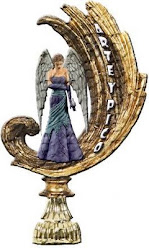I wrote earlier about making my own chalkpaint and I also wanted to share what happened with the professional version .... drumroll ... Annie Sloan. I am sharing this from
as I have received some interest from both blog audiences. I am kind of a day late and a dollar short, as the expression goes. Once I randomly started googling about ways to simplify my painting life given my abundance of projects and scarcity of time ... I discovered that my problem (endless preparation time for redoing furniture) had been solved ages ago. le sigh. because of the myriad of plaudits for the Annie Sloan brand, I decided to try it for my professional test. And now I will join the angelic chorus in shouting hallelujahs to painting high heaven, amazing amazing where have you been all my painting life?
First thing I noticed when opening the can is the luxurious whipped texture. Now this is a can that was shipped to me from Northern France. so it did not come to me fresh off the paint can shaker thing at the paint store (technical term there) so this texture is obviously inherent to the product. It is smooth like frosting, but a little less thick. I chose the Old White because it is presented as devoid of any color pigments (yellow or pink) and thus a welcoming base to any color.
I used the paint on a client project I had overwintered. A large, 2 piece buffet from the 60/70s, pine, covered in a hideous orangey varnish, so well known on pine of this timeframe. I felt this would make a handsome test for the Annie Sloan chalk paint claims of no sanding, no priming, just paint. Normally this sort of finish would reauire either complete sanding or 1-2 Coats of primer to avoid bleed-through to the new finish. especially a light colored finish.
My client had already chosen a color, somewhere between a seafoam and sage green ... the Annie Sloan duck egg made a close match. So I wanted to test not only the ease of using the product, how it matched up to its claims ... but also the economy of it as I have seen some complaints about pricing. For this project I ordered 1 liter of Old White and 1 test jar (100ml) of the duck egg paints, and one tin of the clear wax. I wanted to lighten up the color to get to my client's desire. I mixed approx. 1/3 of the white liter with 3/4 of the sample pot and several tablespoons of water to create the supply of paint for the exterior of the piece. I anticipated I might need to do 2 coats.
For the interior, I blended about 1/2 cup of the white with a yellow acrylic I already had. Also wanting to see how well the Annie Sloan product could integrate with other brands. I covered the entire buffet with one coat that went on smooth as silk, no streaks. I kept the consistency pretty thick like a pancake batter, not very watered down. I did a second coat solely on the top surface of the buffet as this area would experience the most wear.
I did the interior more as a wash because the old wood / veneer was fragile and slightly warped in places and I did not want to get it too wet. I had already contracted with my client not to do any repairs and I did not want to create any more work for myself! After the paint had dried, I was ready to wax.
With chalk paint, you apply wax vs. a clear topcoat of varnish. This goes against everything I have done for years and was the more awkward step of the new process. The weather was super cold here and the wax was not soft (as when it arrived in my warm kitchen) but really firm and difficult to get on the brush. I warmed it up a bit to room temperature and took another go. This will take some adapting on my part, but I can already see where I can improve my approach ... and a little extra research has given me some good tips. Like heating the wax to form more of a glaze you can lightly brush on and then go back to buff. In warmer weather I can see where this would not be a problem, but in my unheated atéliér in the frezing winter of countryside France it is a different story. You apply wax BEFORE sanding which also goes against all instincts for a clean final finish but trust me it worked! only sand what you want to distress or change the look of, you do not have to sand the whole piece to achieve a clean final finish. once you have done your sanding, you can buff the piece to the desired glow or shine. If it is a little streaky or you want it glossier you can add some wax and polish on. The wax adheres to the paint and through buffing creates a finish that will continue to harden and age to a nice patina.
One thing that kind of stumped me was the interior of cabinetry. I usually paint and topcoat the interiors and drawere for a more finished and clean outcome. I don't think it is feasible to wax and buff the interior of cabinetry. No worries there, you can topcoat chalkpaint as an alternative to wax. Which I did.
I am impressed by the ease of working with this product as well as how easily it adhered to the original finish on the furniture! As far as the cost goes ... here it was 22€ for the liter and 9€ for the sample pot. I estimate I used about 20€ of product on this very large two part piece. I did not sand and I did not pay for primer. I used my existing brushes and tools. At a minimum the expense was about the same. I still have plenty of the white paint and wax to use on another project. Which I already have planned! I also purchased a sample pot of their Antibes Green which I was immediately attracted to. I think I can stretch this for 2 projects I have ... wait and see!
I know there is a plethora of other techniques to discover with this paint such as layering more than one color and revealing with water vs sanding, using the dark wax to achieve an aged patina and some of the other specialized finish products like crackling ... but for now I give an enthusiastic 2 thumbs up!











3 comments:
OK!!!!!
Post a Comment